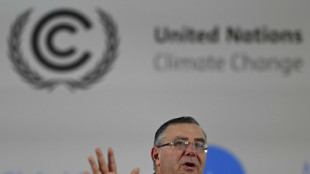
-
 Zelensky vows overhaul of Ukraine's scandal-hit energy firms
Zelensky vows overhaul of Ukraine's scandal-hit energy firms
-
South Africa defy early red card to beat Italy

-
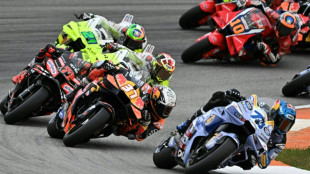 Alex Marquez claims Valencia MotoGP sprint victory
Alex Marquez claims Valencia MotoGP sprint victory
-
McIlroy shares lead with Race to Dubai title in sight

-
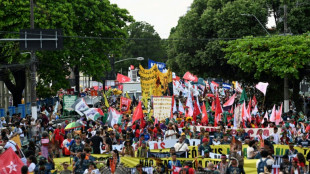 Climate protesters rally in Brazil at COP30 halfway mark
Climate protesters rally in Brazil at COP30 halfway mark
-
Spike Lee gifts pope Knicks jersey as pontiff meets film stars
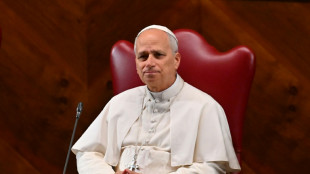
-
 BBC caught in crossfire of polarised political and media landscape
BBC caught in crossfire of polarised political and media landscape
-
'Happy' Shiffrin dominates in Levi slalom for 102nd World Cup win

-
 Palestinian national team on 'mission' for peace in Spain visit
Palestinian national team on 'mission' for peace in Spain visit
-
Brazilian 'Superman' cheers child cancer patients in Ghana

-
 India close in on win over South Africa after Jadeja heroics
India close in on win over South Africa after Jadeja heroics
-
Huge explosions rock industrial area near Argentina's capital
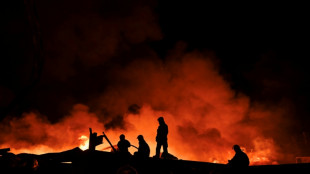
-
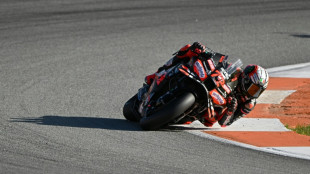 Bezzecchi takes pole for Valencia sprint and MotoGP
Bezzecchi takes pole for Valencia sprint and MotoGP
-
Dominant Shiffrin leads after first slalom run in Levi

-
 Nine killed in accidental explosion at Indian Kashmir police station
Nine killed in accidental explosion at Indian Kashmir police station
-
Climate protesters to rally at COP30's halfway mark

-
 Fighting South Africa lose Rickelton after India 189 all out
Fighting South Africa lose Rickelton after India 189 all out
-
Harmer leads South Africa fightback as India 189 all out

-
 Prison looms for Brazil's Bolsonaro after court rejects his appeal
Prison looms for Brazil's Bolsonaro after court rejects his appeal
-
EU bows to pressure on loosening AI, privacy rules
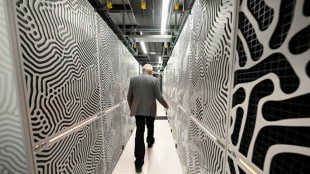
-
 India close in on lead despite South African strikes
India close in on lead despite South African strikes
-
Curry's 49 points propel Warriors in 109-108 win over Spurs

-
 NZ boxer Parker denies taking banned substance after failed test
NZ boxer Parker denies taking banned substance after failed test
-
Australia setback as Hazlewood ruled out of 1st Ashes Test

-
 Australia pace spearhead Josh Hazlewood ruled out of 1st Ashes Test
Australia pace spearhead Josh Hazlewood ruled out of 1st Ashes Test
-
UN Security Council to vote Monday on Trump Gaza plan
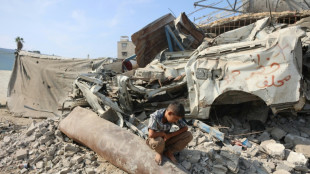
-
 Japan's Tomono leads after men's short program at Skate America
Japan's Tomono leads after men's short program at Skate America
-
China tells citizens to avoid Japan travel as Taiwan row grows
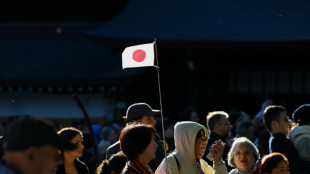
-
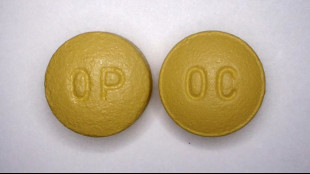 Purdue Pharma to be dissolved as US judge says to approve bankruptcy
Purdue Pharma to be dissolved as US judge says to approve bankruptcy
-
Iran's first woman orchestra conductor inspires

-
 Wood gets all-clear in boost for England
Wood gets all-clear in boost for England
-
Golf's world No. 8 Thomas has back surgery

-
 Rebooted Harlem museum celebrates rise of Black art
Rebooted Harlem museum celebrates rise of Black art
-
'Desperation in the air': immigrant comics skewer Trump crackdown

-
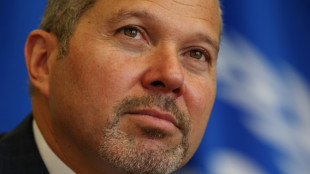 UN regulator says shipping still wants to decarbonize -- despite US threats
UN regulator says shipping still wants to decarbonize -- despite US threats
-
Grant, Kim share halfway lead in LPGA Annika tournament

-
 Musk's Grokipedia leans on 'questionable' sources, study says
Musk's Grokipedia leans on 'questionable' sources, study says
-
Trump signs order to lower tariffs on beef, coffee, other goods
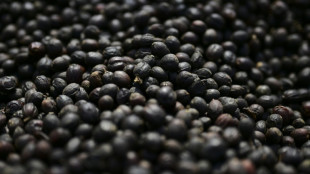
-
 Croatia qualify for 2026 World Cup, Netherlands close, Germany in limbo
Croatia qualify for 2026 World Cup, Netherlands close, Germany in limbo
-
'Last Chance U' coach dies after shooting: US police

-
 Sinner completes perfect ATP Finals group stage, Auger-Aliassime reaches last four
Sinner completes perfect ATP Finals group stage, Auger-Aliassime reaches last four
-
Woltemade sends Germany past Luxembourg in World Cup qualifier

-
 Croatia qualify for 2026 World Cup with 3-1 win over Faroes
Croatia qualify for 2026 World Cup with 3-1 win over Faroes
-
Kai Trump makes strides but still misses cut in LPGA debut

-
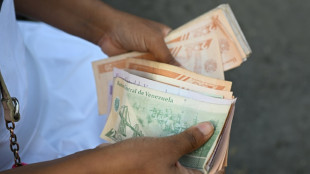 Return to bad days of hyperinflation looms in Venezuela
Return to bad days of hyperinflation looms in Venezuela
-
US airspace recovers as budget shutdown ends

-
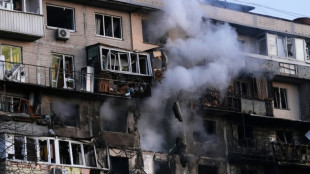 Russia strike on Kyiv apartment block kills six, Ukraine says
Russia strike on Kyiv apartment block kills six, Ukraine says
-
Arrest made in shooting of 'Last Chance U' coach: US police

-
 At COP30, senator warns US 'deliberately losing' clean tech race with China
At COP30, senator warns US 'deliberately losing' clean tech race with China
-
US, Switzerland say deal reached on trade and tariffs
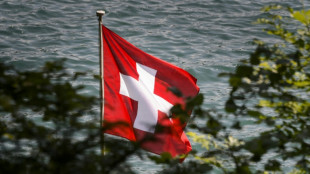

Rock on: how crushed stone could help fight climate change
From sugar plantations in Brazil to tea estates in India, crushed rock is being sprinkled across large stretches of farmland globally in a novel bid to combat climate change.
The technique is called Enhanced Rock Weathering (ERW) and aims to speed up the natural capture and storage of carbon dioxide -- a planet-warming greenhouse gas.
It is potentially big business with tech giants, airlines and fast fashion firms lining up to buy carbon credits from ERW projects to "offset" or cancel out their own emissions.
- What is ERW? -
ERW aims to turbocharge a natural geological process called weathering.
Weathering is the breakdown of rocks by carbonic acid, which forms when carbon dioxide in the air or soil dissolves into water.
Weathering occurs naturally when rain falls on rocks, and the process can lock away carbon dioxide from the air or soil as bicarbonate, and eventually limestone.
ERW speeds the process up by using quick-weathering rocks like basalt that are ground finely to increase their surface area.
- How effective is ERW? -
ERW is still a fairly new technology and there are questions about how much carbon it can remove.
One US study found applying 50 tonnes of basalt to a hectare of land each year could remove up to 10.5 tonnes of carbon dioxide per hectare over a four-year period.
But scientists applying basalt to oil palm fields in Malaysia and sugarcane fields in Australia measured much lower removal rates.
"Field trials are showing that there have been overestimates of the amount and rate captured," said Paul Nelson, a soil scientist at James Cook University who has studied ERW.
Rates depend on variables including rock type and size, how wet and hot the climate is, soil type and land management.
And measuring the carbon captured is difficult.
The most popular technique measures "cations", positively charged ions that are released from the rock during weathering.
But those cations are produced regardless of which acid the rock has reacted with.
"If there are stronger acids than carbonic, then it will react with those," said Nelson, so measurable cations are produced even when carbon dioxide is not captured.
That doesn't mean ERW is pointless, said Wolfram Buss, a researcher on carbon dioxide removal at the Australian National University, just that it needs to be carefully calibrated and measured.
"There is no doubt that this technique works," he said.
"However, to be sure how much carbon dioxide we actually remove, more funding is required to do fundamental studies."
- Are there other benefits? -
The added rock increases soil alkalinity, which can boost crop growth, soil nutrients and soil formation.
Basalt is both naturally abundant and often available as a byproduct of quarrying, lowering the costs of the process.
Experts note that even if the rock reacts with other acids in the soil, failing to lock away carbon dioxide at that stage, it can still have planetary benefits.
That is because acids in the soil would otherwise eventually wash into rivers and the sea, where acidification leads to the release of carbon dioxide.
If the rock neutralises that acid in the soil, "you've prevented carbon dioxide being released from the water into the atmosphere downstream", said Nelson.
The scale of those possible "prevented" emissions is not yet clear, however.
- What are the risks? -
ERW is broadly considered safe since it merely speeds up an existing natural process. However, some quick-weathering rocks have high levels of potentially poisonous heavy metals.
Scattering finely ground rock also requires appropriate protective gear for those involved.
But the main risk is that incorrect measurements overestimate captured carbon.
Some projects are already selling carbon credits from ERW. If a company buys an ERW credit to "offset" its emissions but the process captures less than projected, it could result in net higher carbon dioxide put into the atmosphere.
- Where is ERW being done? -
Projects are happening in most parts of the world, including Europe, North America, Latin America and Asia.
Earlier this year, a project in Brazil announced it had delivered the first-ever verified carbon-removal credits from an ERW project.
The process is being used or trialled in agricultural settings from tea plantations in India's Darjeeling to US soy and maize fields.
- What investor interest is there? -
An ERW startup -- Mati Carbon, working in India -- won the $50 million X Prize for carbon removal projects earlier this year.
In December, Google announced what was then the world's biggest ERW deal, for 200,000 tons of carbon removal credits, to be delivered by the early 2030s by startup Terradot.
The cost of the deal was not disclosed but a separate agreement by Terradot with a company representing firms including H&M sold 90,000 tons for $27 million.
B.Mahmoud--SF-PST


